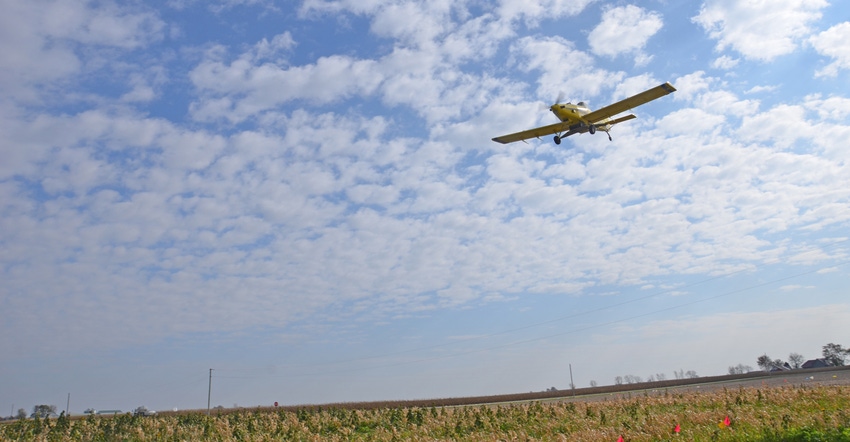June 21, 2022

Spring 2022 was typical in that it was not typical. The impact of a spread-out planting season can translate into harvest issues. A late harvest might affect how and what you seed as cover crops.
Most cover crops other than cereal rye, triticale and barley need to be planted by the first week of October across much of Indiana. Daikon radish, annual ryegrass, legumes and other species need to be planted in September to germinate quickly and provide the benefits you seek from your cover crop investment. This is where flexibility and the use of multiple seeding methods might be needed.
Here are four options to consider as you work with the reality of late-planted corn and soybeans:
1. Aerial seeding. Aerial seeding with an airplane or helicopter as your cash crop begins to mature and dry down allows earlier seeding of cover crops. This earlier seeding allows more flexibility in what cover crop species can be used, and increases potential for additional fall growth and overall benefit for your cover crop investment. Since there can be limited seed-to-soil contact, you’re dependent on fall rain. You may also be limited somewhat on cover crop mixes and rates due to weight limitations on aircraft.
2. High-clearance seeder. The benefits are like aerial seeding but allow you to potentially use your own equipment or work with a neighbor to build a unit to seed covers. Offset the cost of equipment by doing custom application. Again, seed-to-soil contact is limited. There will be potential cash crop damage, especially on end rows. Availability of these units may be limited in some areas.
3. Combine seeder. An intriguing option is seeding cover crops during harvest. Seeding and harvest are done in one pass, using a seeder mounted to the combine. Ray McCormick, Vincennes, Ind., has used this practice for many years. Seed loss is minimal, and this option eliminates a second operator drilling cover crops. While it has the benefit during the early part of harvest of reducing the need for additional manpower, once harvest moves into October, you may benefit more from the better seed-to-soil contact of a drill or planter. Seeding as you combine still requires fall rain to get the seed started, and it can slow down harvest, especially in corn, due to needing to fill the seed hopper often. The main advantage of this system is in reduced labor and possibly less wear and tear on equipment.
4. Species change. If you had planned to plant species other than cereal rye, triticale or winter barley after harvest, rethink your plans and adjust your seed order early. Across much of Indiana, after Oct. 1, most other species will not provide desired benefits in a normal fall and early winter scenario. A change in species in the fall will lead to changes during planting in 2023. Again, you will need to be flexible and have multiple plans to terminate and manage your covers next spring.
Donovan is a district conservationist with the Natural Resources Conservation Service. He writes on behalf of the Indiana Conservation Partnership.
About the Author(s)
You May Also Like






